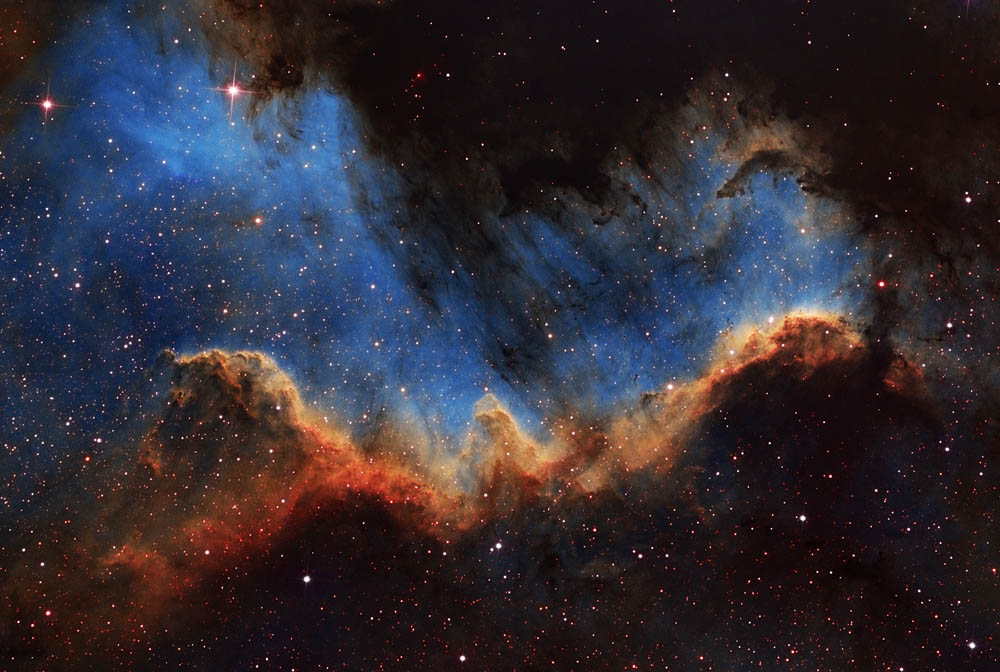
Cygnus Wall Part of North America Nebula in SHO Sky & Telescope
The Cygnus Wall of Star Formation Credit & Copyright: Michael Sherick Explanation: The North America Nebula in the sky can do what North Americans on Earth cannot -- form stars.
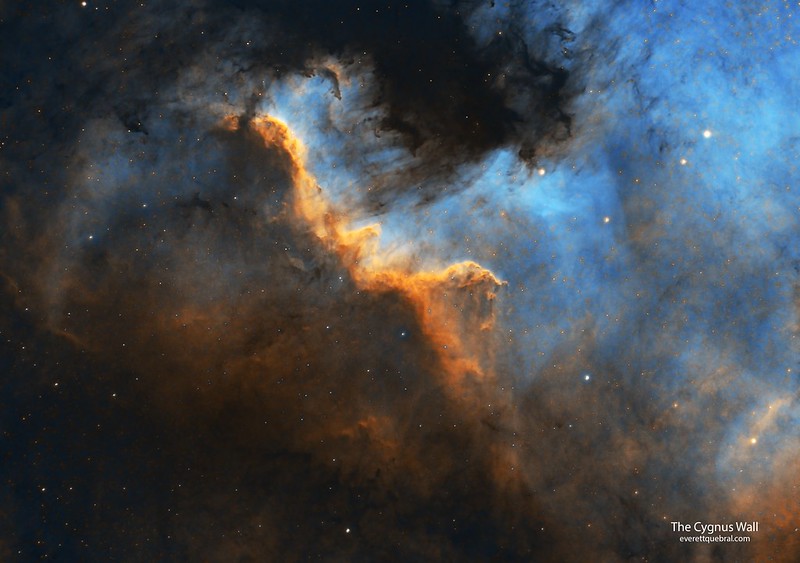
Capturing the Cygnus Wall Just Another Backyard Astronomer
The Cygnus Wall. September 19, 2023. The Cygnus Wall is a turbulent region of star formation, and part of the much larger North America Nebula (NGC 7000). The Cygnus Wall is mostly made from Hydrogen and Sulfur, shown here in orange-red, surrounded by Oxygen, shown here as blue. The Cygnus Wall is about 20 light-years long, or put another way.
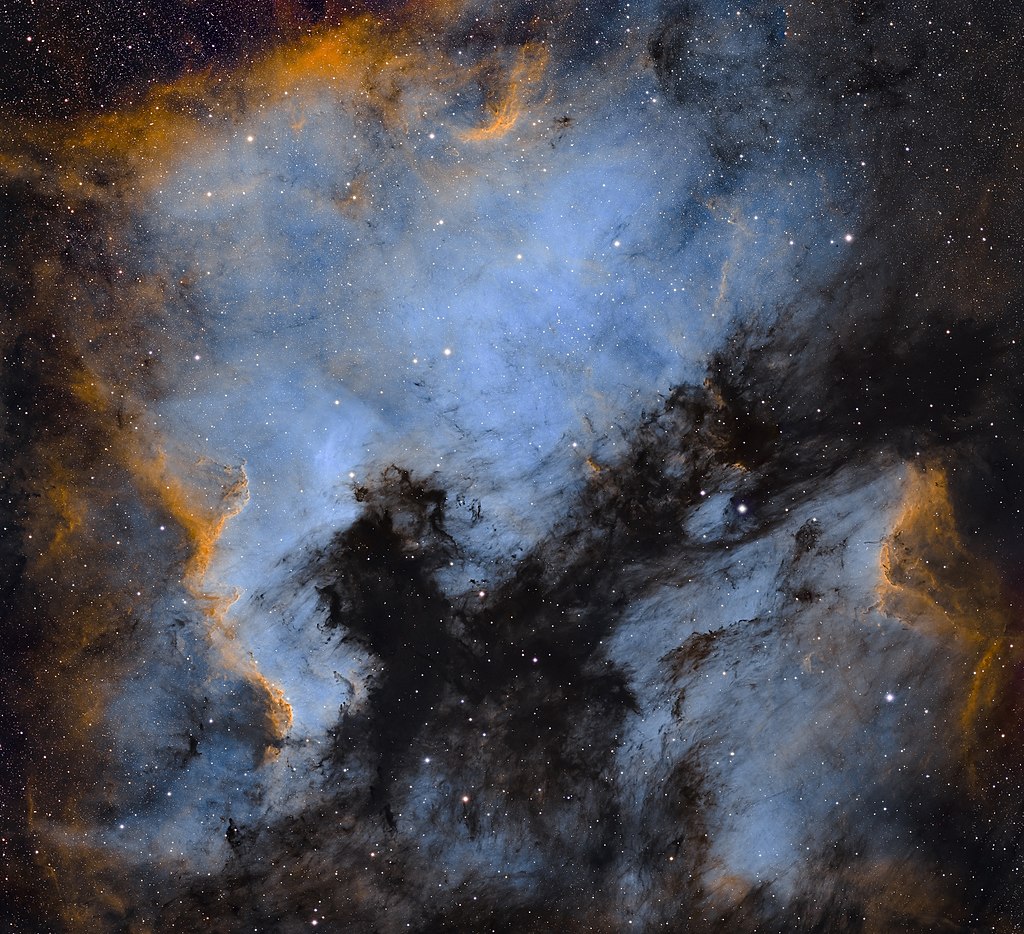
North American Nebula Facts and Info The
Description: The Cygnus Wall as a part of the North America Nebula (NGC 7000 or Caldwell 20) in the constellation Cygnus imaged with Hubble palette (SHO) This deep space object is an emission nebula consisting of interstellar cloud of ionized hydrogen (HII) and much smaller portion of other gases (OII, SII and others).
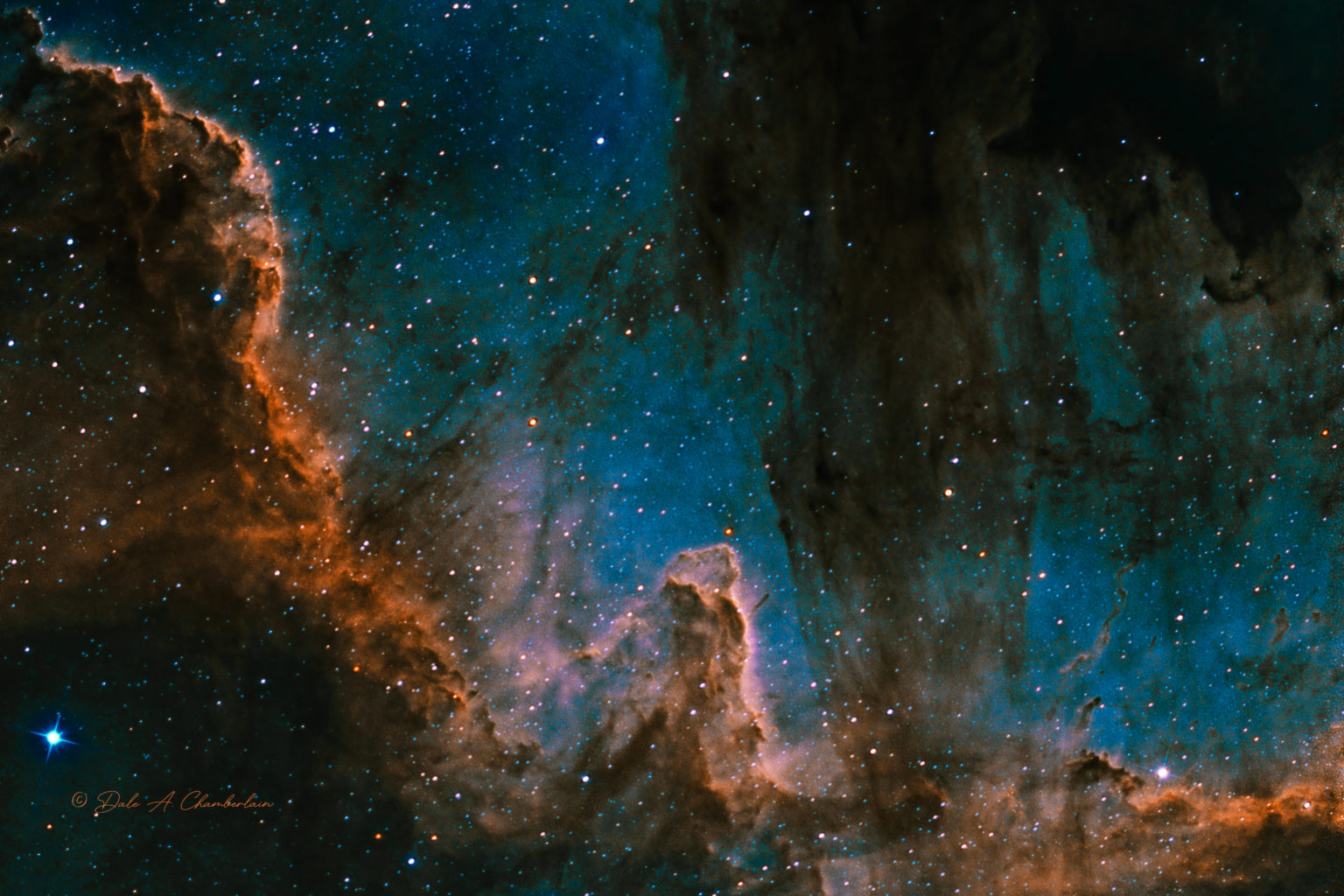
NGC 7000 The North American Nebula Cygnus Wall Chamberlain Observatory
The Cygnus Wall of the North America Nebula shot in color with a dual narrowband filter. The North America Nebula covers a region more than ten times the area of the full moon, but its surface brightness is low, so normally it cannot be seen with the unaided eye.
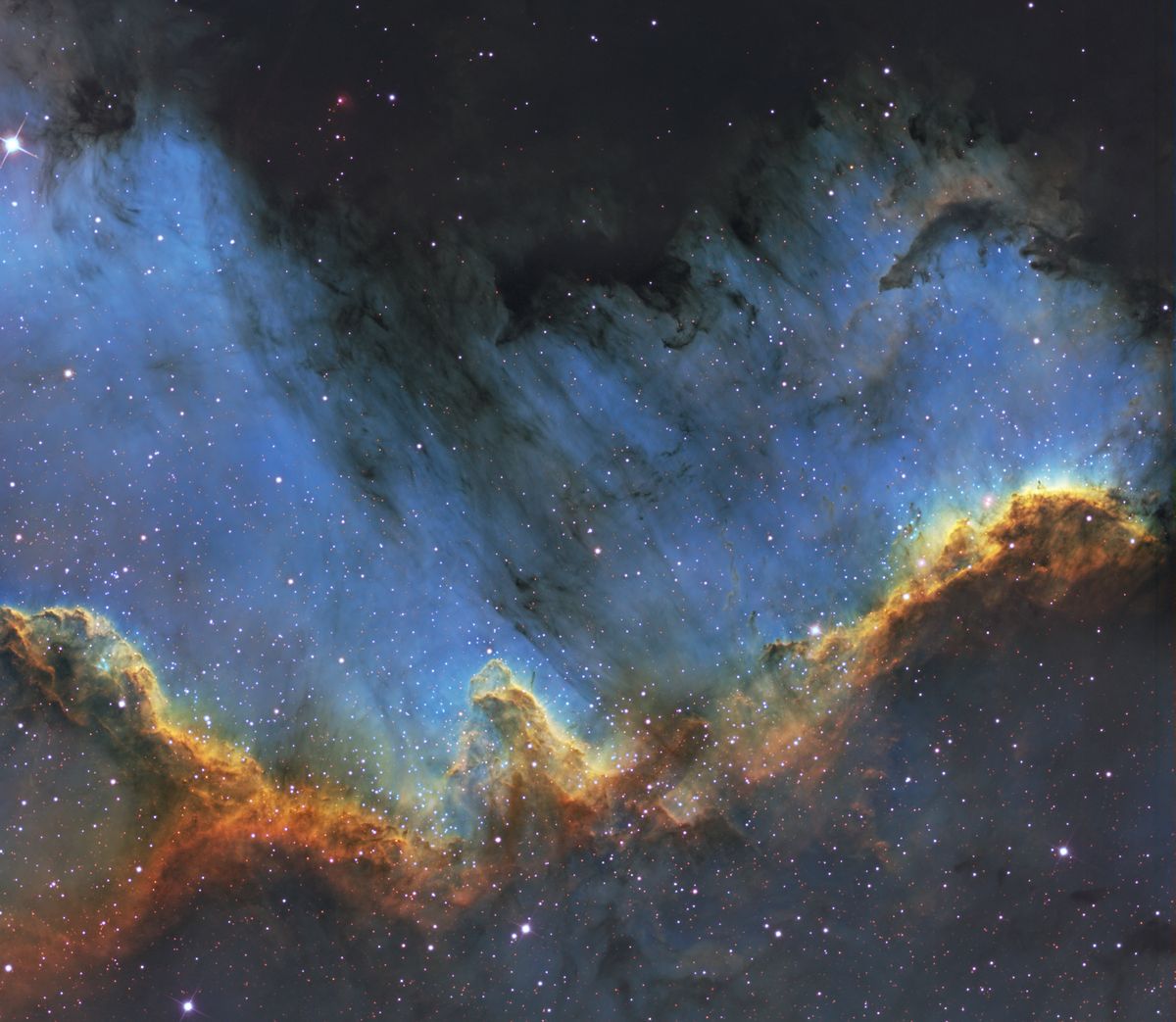
Stunning Photo of Cosmic 'Cygnus Wall' Captured by Amateur Astronomer
In this vivid skyscape, stars are forming in the W-shaped ridge of emission known as the Cygnus Wall. Part of a larger emission nebula with a distinctive outline popularly called The North America Nebula , the cosmic ridge spans about 20 light-years.
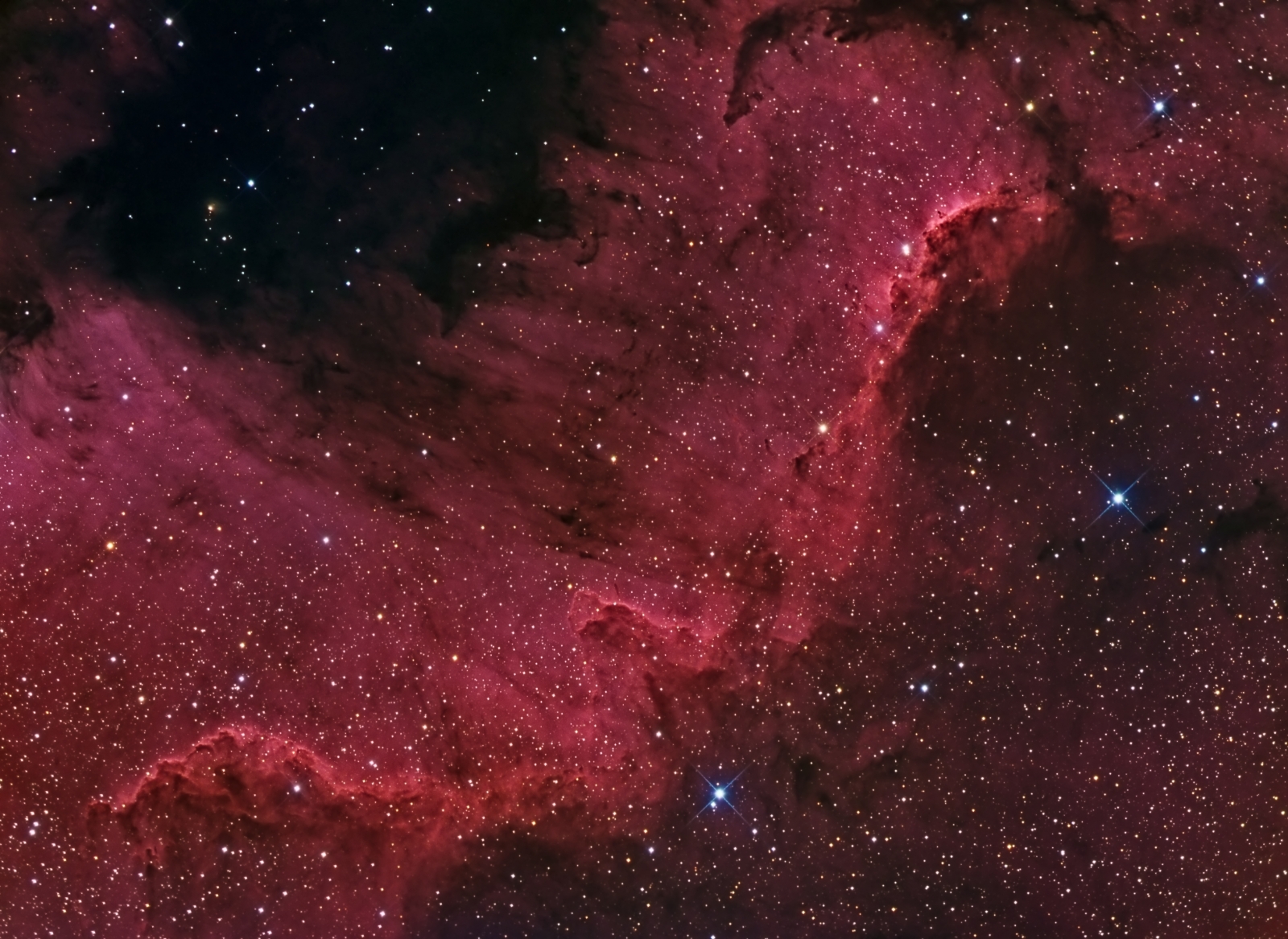
Southern NGC7000 The Cygnus Wall Astrodoc Astrophotography by Ron
The Cygnus Wall, a portion of the North American Nebula (NGC 7000) in the constellation Cygnus. The nebula is approximately 1,500 light years from Earth, and the Cygnus Wall spans about 20 light years. The Wall exhibits the most concentrated star formations in the nebula. The essential guide to astronomy
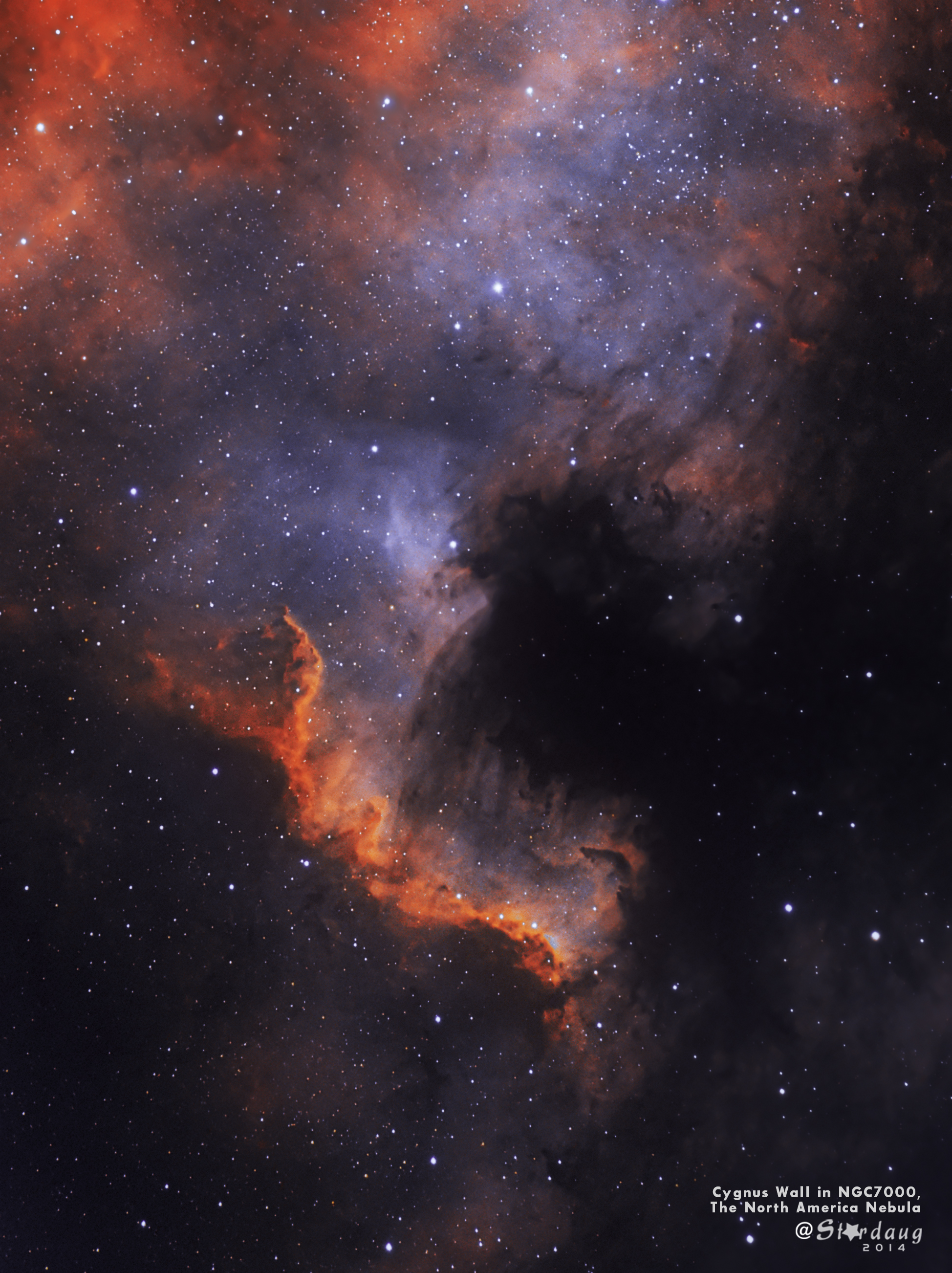
Cygnus Wall in NGC 7000 Nebula (Narrowband) VisibleDark
Constellation: Cygnus Designations: NGC 7000, Caldwell 20, Sharpless 117 Object Type: Emission Nebula Apparent Magnitude: 4 Size: 120 x 100 arcmins, 6 degrees Distance: 1,500 lights years from Earth From the northern hemisphere, the best time to observe and photograph the North America Nebula is from June - September.
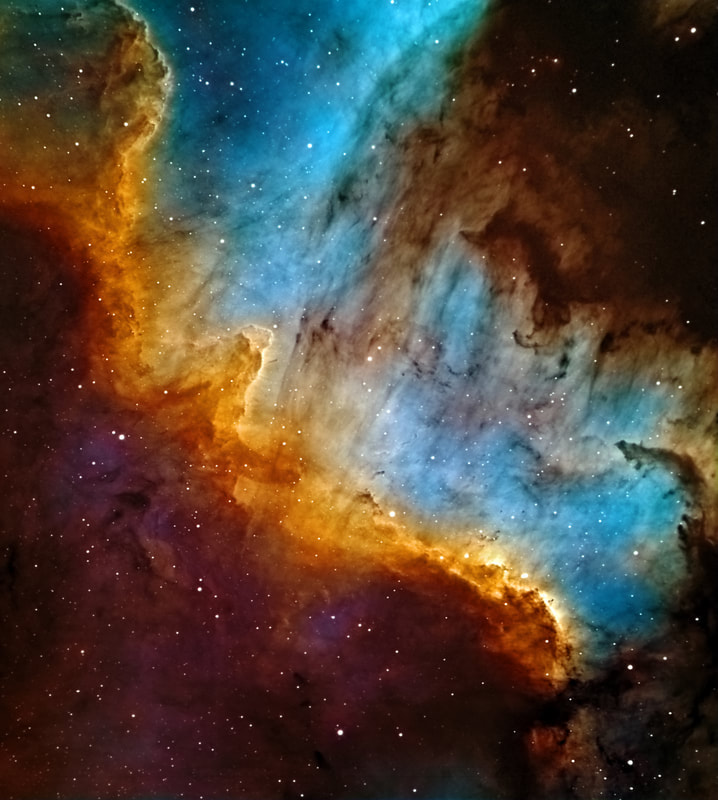
The Cygnus Wall All About
Image Title: The Cygnus Wall. Date image was taken: July 20, 2023. Image Description and Details : The North American Nebula, catalogued as Ngc 7000, is an emission nebula located around 1,890 light-years away in the constellation Cygnus, close to the star Deneb. The nebula's shape evokes North America and the Gulf of Mexico.
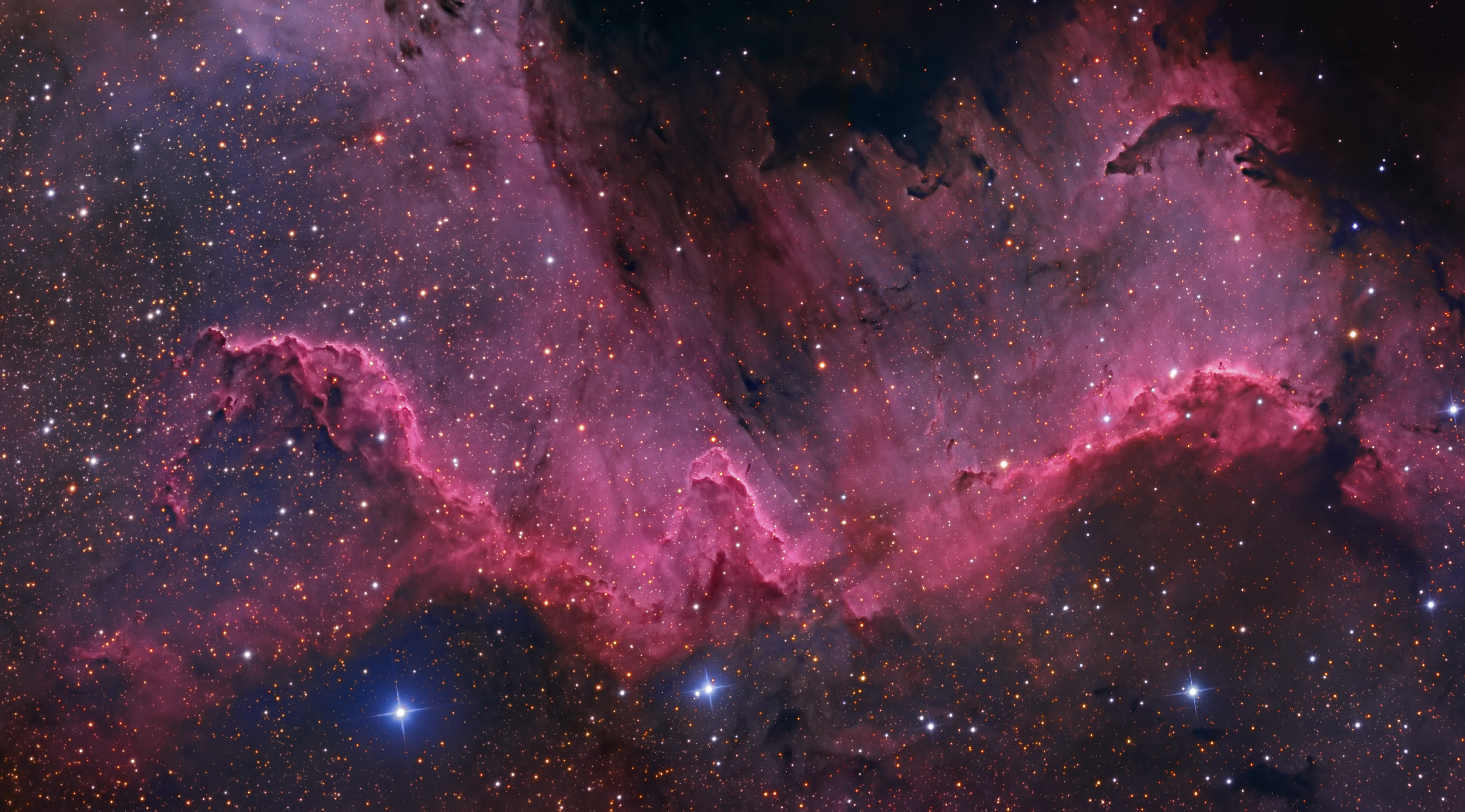
APOD 2015 March 12 Along the Cygnus Wall
Mar 22, 2012 Image Article Wispy tendrils of hot dust and gas glow brightly in this ultraviolet image of the Cygnus Loop nebula, taken by NASA's Galaxy Evolution Explorer. The nebula lies about 1,500 light-years away, and is a supernova remnant, left over from a massive stellar explosion that occurred between 5,000 to 8,000 years ago.

Cygnus Wall Nebula Hidden Skies
The Cygnus (also known as the Northern Cross) is one of the most recognizable constellations in the boreal sky hemisphere. It contains Deneb (a Cyg), one of the corners of the asterism Summer Triangle and one of the brightest stars in the Night Sky.The Cygnus also contains some well-known emission nebulae such as NGC 7000 (the North America Nebula), which is easily identifiable using.
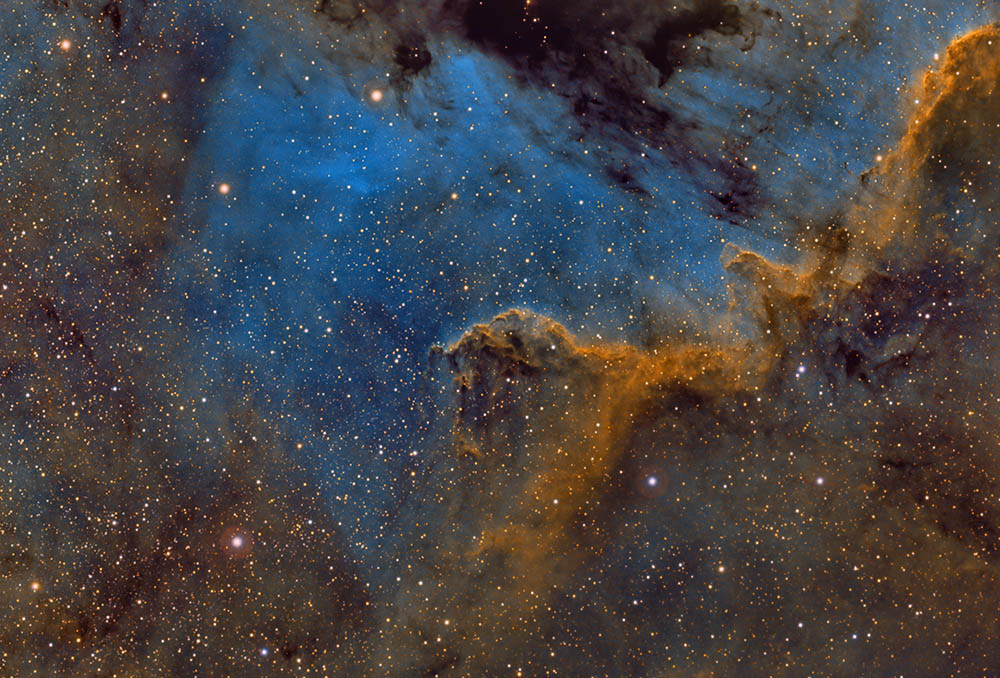
The Cygnus Wall Part of the North America Nebula (NGC 7000) Sky
published 24 October 2013 Veteran astrophotographer Bill Snyder captured this image of the Cygnus Wall, which is the most active region of star formation in the North America Nebula. Snyder.

Cygnus Wall by Stephan Hamel SkyNews
Explanation: The prominent ridge of emission featured in this vivid skyscape is known as the Cygnus Wall. Part of a larger emission nebula with a distinctive shape popularly called The North America Nebula, the ridge spans about 10 light-years along an outline that suggests the western coast of Mexico.

Nebulae, NGC7000 North American Nebula And The Cygnus Wall In Tricolour
This is a bright wall of interstellar gas. Stars are forming in this ridge of emission known as the Cygnus Wall. It is part of a larger emission nebula (NGC 7000) also known as the The North America Nebula. The camera I used to take this image is the QHY268C. A new breed of cooled cmos camera from QHYCCD.
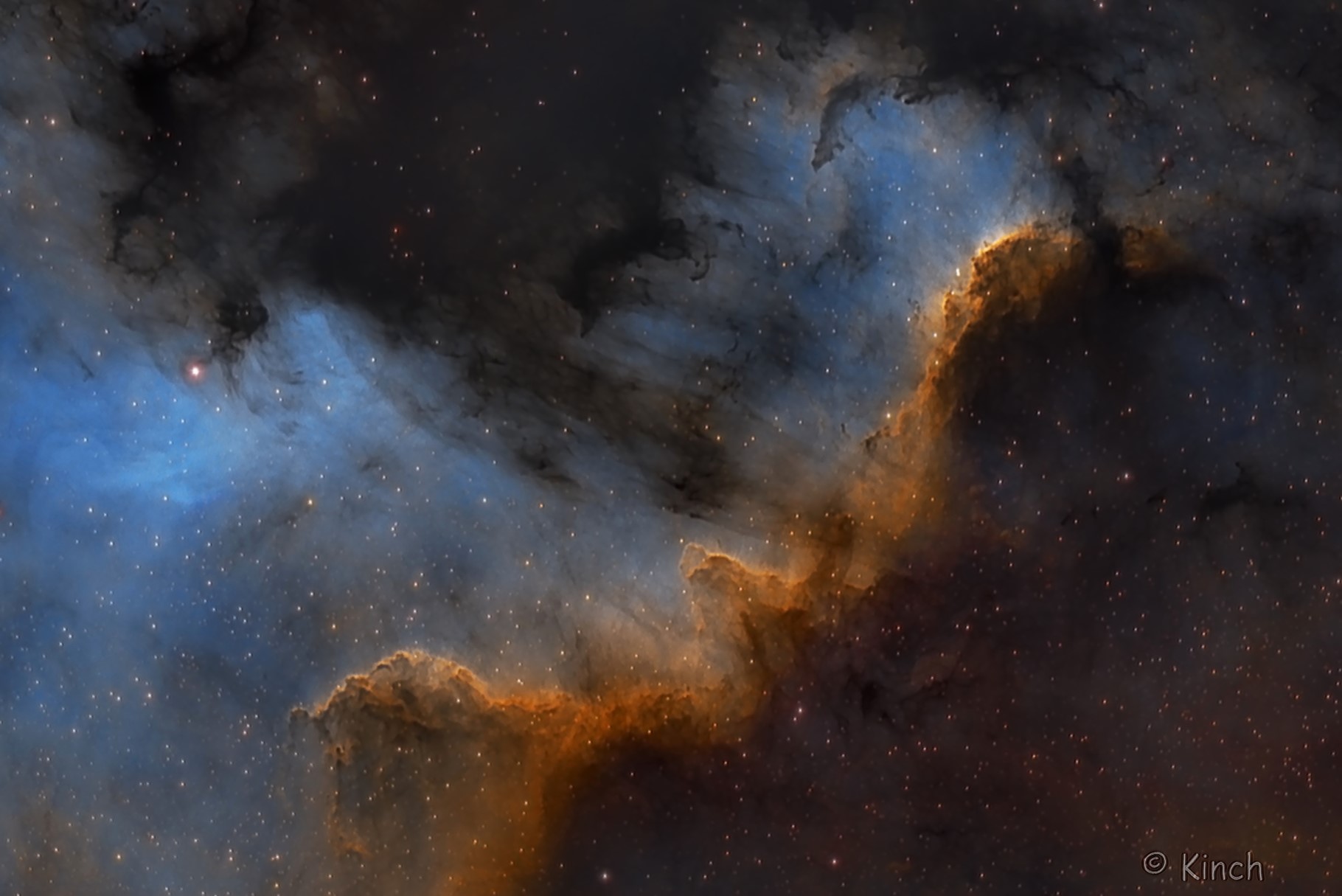
Cygnus Wall KinchAstro
This beautiful skyscape shows the star forming wall lit and eroded by bright young stars, and partly hidden by the dark dust they have created. The North America Nebula ( NGC 7000) spans about 50 light years and lies about 1,500 light years away toward the constellation of the Swan ( Cygnus ). A different astronomy and space science related.
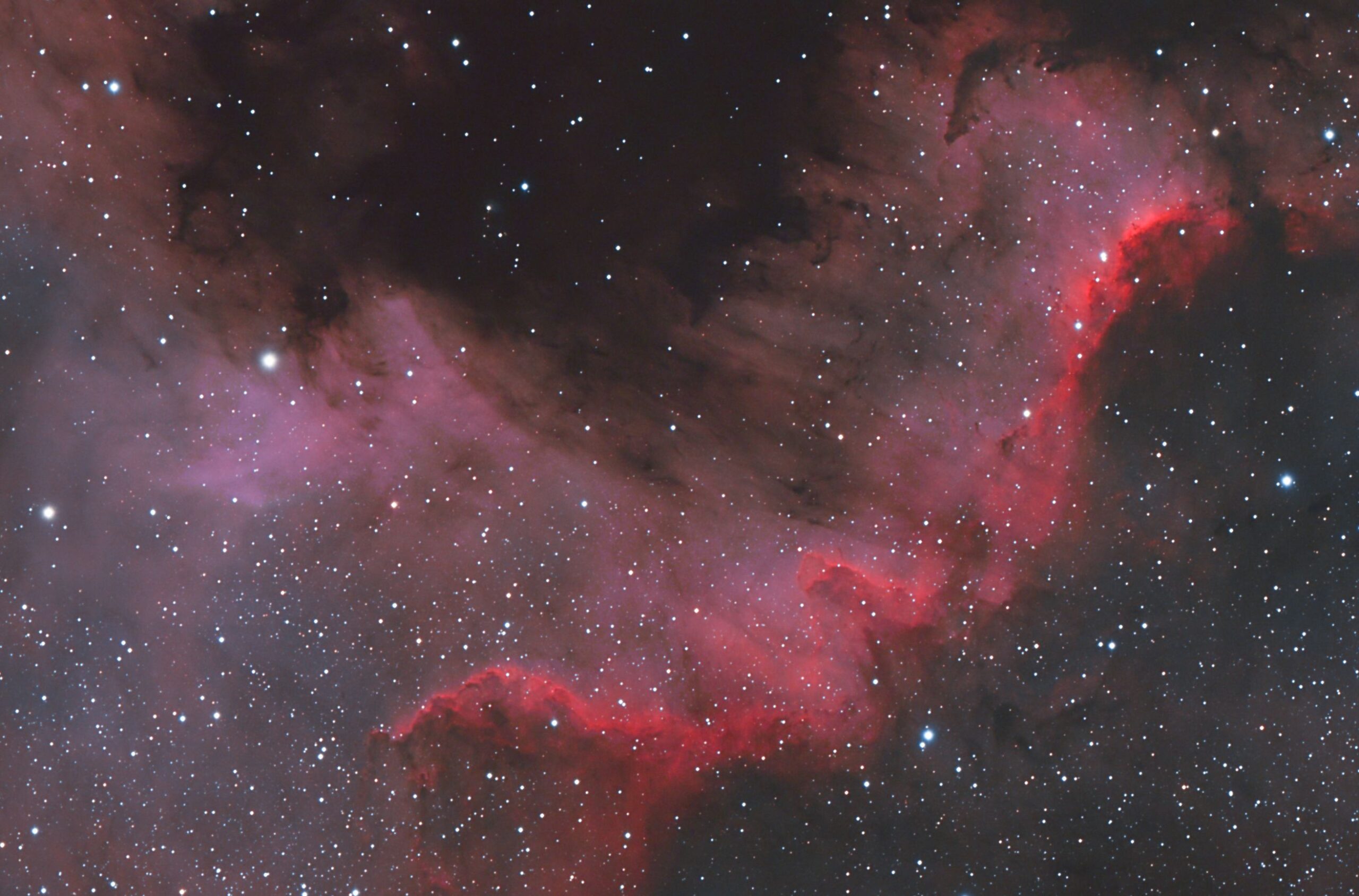
The Cygnus Wall in NGC 7000 VisibleDark
Explanation: The W-shaped ridge of emission featured in this vivid skyscape is known as the Cygnus Wall. Part of a larger emission nebula with a distinctive outline popularly called The North America Nebula , the cosmic ridge spans about 20 light-years.
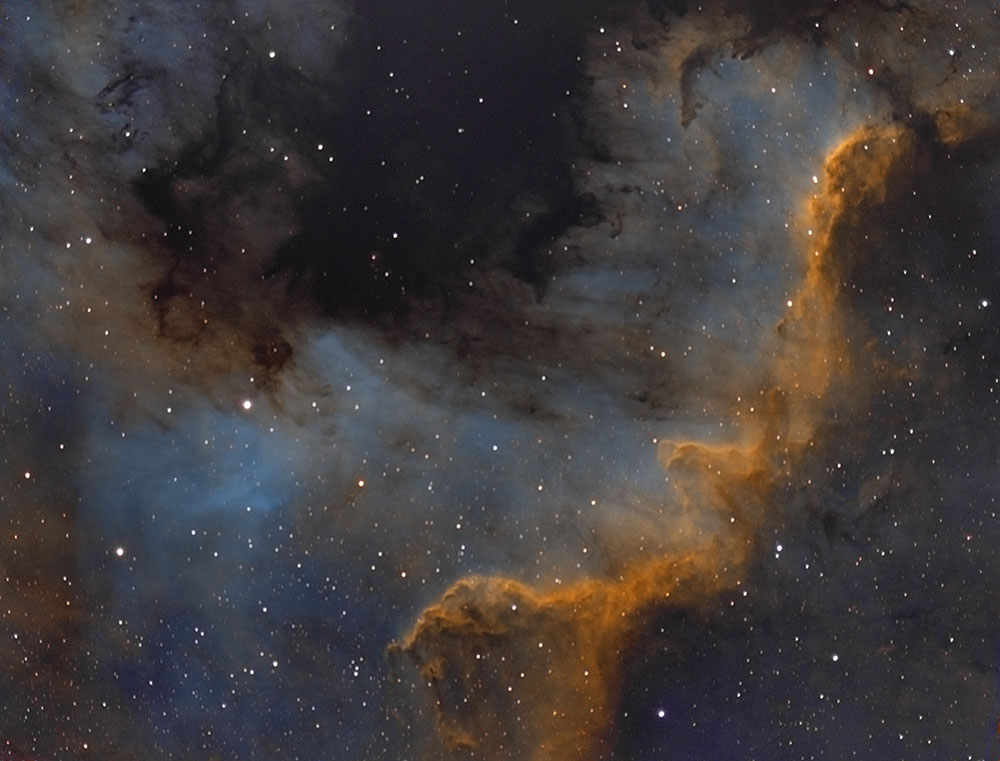
Cygnus Wall in the North American Nebula Narrowband Image Sky
The Cygnus Wall is the most active region of the North American Nebula, or NGC 7000. The region is distinguished by a glowing-red color caused by hydrogen gas burning where new stars are in the.